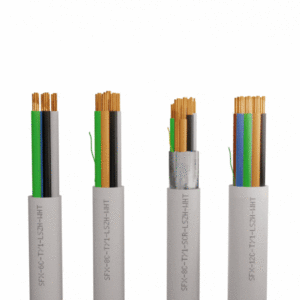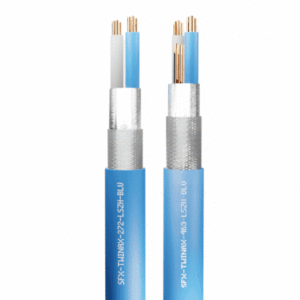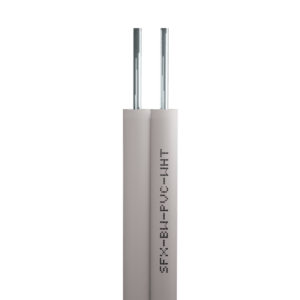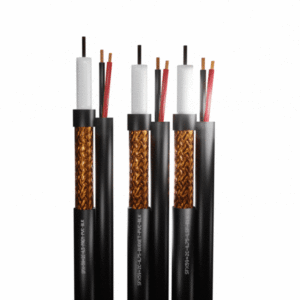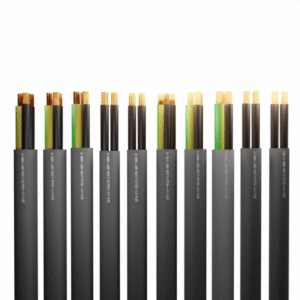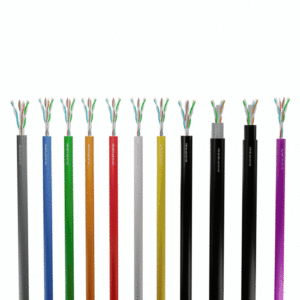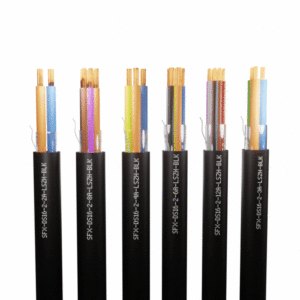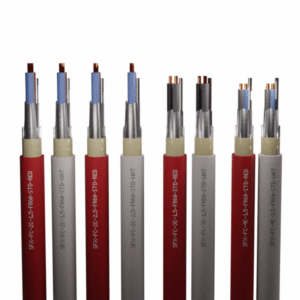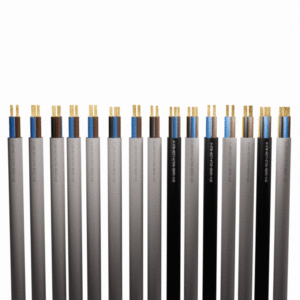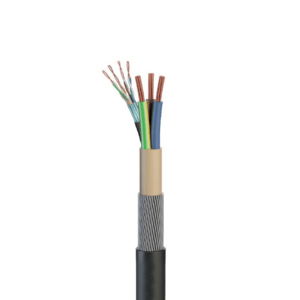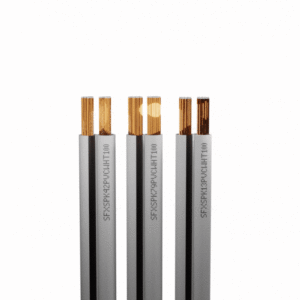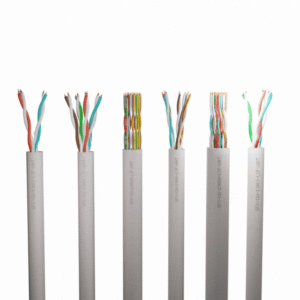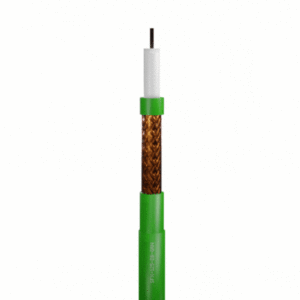Construction Products Regulation
CPR Under The Microscope
What is CPR?
CPR is an abbreviation for “The Construction Products Regulation” which in simple terms is European legislation that came into effect in July 2017 that affects all products used in fixed installations within buildings and construction. CPR was designed to cover all construction materials including electrical cable regulations.
CPR provides a common platform across Europe and under the regulation BS EN 5075, for electrical cable, it classifies products into five different classifications depending on their reaction to fire. Tests are based against BS EN 60332-1-2, BS EN50399 and BS EN ISO1716. and are performed by an independent notified body.
Cables that are covered by this regulation are those that are manufactured and placed on the market for installation in a permanent manner within a commercial, industrial, or residential application. CPR highlights and ensures cables installed perform to a UK standard and specific performance criterion, especially with respect to safety in the case of fire.
Classifications for electrical cable are certified with a range of “Euroclasses”, these classifications are shown and certified as “A to F” and are classified and denoted by how an electrical cable reacts to flame, spread, propagation, evolution of smoke and corrosive gases and flaming droplets. Resistance to fire specifically refers to the continuity of performance in the event of a fire and how the power and signal supply performance over a specific time. There are a variety of CPR classifications ranging from Fca to Aca.
CPR is mandatory, and is a legal requirement, the responsibility of compliance sits across the market, and sits with the manufacturers, importers, distributors as well as specifiers and installers, and therefore it is vital CPR is fully understood throughout the supply chain.
Along with CPR electrical cables carry several other standards and regulations which depending on the cable type must be adhered before being made available on the market. CPR legislation will continue to apply to the UK post BREXIT and with UK now having left the European Union.

Why does CPR Exist?
CPR allows a for common standard across Europe and supports an informed and unbiased purchasing and installation decision. It allows the selection of suitable product based on a transparent and detailed regulation process, ensuring product is fit for purpose and application, prior to installation.
Although CPR is a common standard, each country in Europe can under its own law, set the minimum standard of CPR, and therefore it is vital that not only the product CPR classification is known but also the minimum CPR classification by country and application. Each country has its own national regulations, however in addition to CPR, the UK also adopts specific wiring regulations, the British Standard for wiring regulations is BS 7671 and sets out guides to enable the safe installation of electrical cabling.
As a legal requirement manufacturers and suppliers of cable therefore must ensure that any cable brought to market complies to CPR. This specially relates to ensuring all cables are tested via a UK accredited test laboratory ensuring they meet the UK CPR classifications. As part of the rigorous testing process, a manufacturer will be provided an extended application of results and an assessment and verification of constancy of performance. This defines the performance of the cable when under fire in a controlled lab environment.
Euroclasses Explained
There are seven CPR cable classification and criteria these being:
- Aca – Non-combustible. No Polymeric cable can achieve this performance.
- B1ca – Very high fire performance with minimum fire propagation, and not yet available on the market.
- B2ca – High fire performance, very low levels of fire propagation, and currently the highest classification for electrical cabling, manufacturer audits also mandatory.
- Cca – Robust fire performance during testing and low levels of fire propagation. Manufacturers offering Cca and above classifications must be audited periodically by a third party.
- Dca – Moderate fire performance with levels of flame propagation
- Eca – The most common classification in the UK and meets the basic vertical flame test requirements.
- Fca – Flammable and does not meet the requirements of BS EN 60332 1-2 vertical flame test.
The higher up the Euroclass scale i.e., B2ca the better the cable performs to both reaction and resistance to fire. All cables brought market in the UK must comply to CPR and depending on the installation type and application, different levels of CPR accreditation may be required. It is expected that any cable brought to market must meet between the minimum 30- and 120-minute load time under pressure of fire.
Euroclass certification indicates that cables have been independently tested and perform as they should, there are a variety of UK laboratories such as BASEC and LCPB which provide CPR accreditation.

Who is responsible to determine which Euro class should be used within an installation?
CPR is a legal requirement and therefore manufacturers and suppliers of electrical cable must ensure that any cable brought to market complies to CPR, however ultimately the responsibility of compliance and use of a specific cable is the responsibility through the supply chain and therefore it is also the responsibility of the designer, specifier, or installer to decide on which Euroclass is acceptable for the entire project. Any classification can be used providing they meet their clients’ specific contractual requirements.
How do you know an electrical cable is compliant to CPR?
Declaration of Performance (DOP)
As part of the testing, a manufacturer will be provided an extended application of test results and an assessment and verification of constancy of performance. This defines the performance of the cable when under fire in a controlled lab environment. It is the duty of any manufacturer or supplier to ensure they complete and provide a Declaration of Performance (DOP) for all cables, this details all legal requirements and defines the CPR classification for that cable. All DOP’s must be retained for a minimum 10-year period.
Any manufacturer, importer and distributor must, for relevant cable supplied, declare its performance in terms of the reaction to fire properties laid out in EN50575. This can include:
- Flame propagation
- Heat release
- Flame spread
- Smoke production
- Acidity
- Flaming droplets
What should be included in The Declaration of Performance:
- Declaration of performance number
- Unique identification code of the product-type
- Intended use
- Manufacturer
- Authorised representative
- System/s of AVCP
- Harmonised standard & Notified body
- European Assessment Document/European Technical Assessment/Technical Assessment Body/Notified body
- Declared performance
It is important to note that Fire Cable is not covered under the standard EN50575 CPR guidelines, however it is thought that in the future CPR will be extended to also include fire resistant cables.
CE Marking
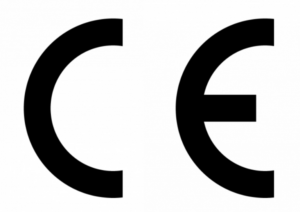
Look out for the CE mark, any CPR compliant cable can only be CE marked if it has a supporting DOP by a notified body and has been tested under the Euroclass and CPR guidelines.
In addition to the DOP, CPR also defines specific requirements for labelling and sheath printing to ensure complete transparency of end-to-end production and performance to CPR, it is the duty and legal requirement of all manufacturers and suppliers to ensure they comply to these requirements.
CE Marking is the easiest way to quickly identify an electrical cable is CPR compliant, CE marking is a legal requirement and must be present on the cable and cable packaging, if placed on the market after July 2017.
For use of the CE Marking symbol the following should be supplied in accordance with Regulation (EC) no.765/2008:
- Identification number of the notified body
- Name and registered address of manufacturer or identifying mark
- Last two digits of year in which marking first affixed
- Reference number of DoP
- Dated reference to European standard applied (EN 50575:2014)
- Unique identification code of product type
- Intended use as laid down in European standard applied (EN 50575:2014)
- The class of the performance declared
HAR or HEN Mark

Harmonised European Standard, known commonly as hEN or HAR denotates on-going and independent testing and approval, cables that confirm to European Harmonisation standards (such as EN50525) have a single designation code and are manufactured to European standards and specifications. Using the HAR or HEN mark for suppliers promotes safety and consistency and in terms of countries that support the HAR scheme these are Belgium, Germany, France, Italy, UK, Sweden, Spain, Portugal to name but a few.
Technical Documentation
Manufacturers, supplier and importers should also provide and make available other technical information, through technical data sheets of specification documents. These documents although not a legal requirement should link relevant CPR information back to the specific cable.
Technical Documentation Should Include:
- Identification number of the testing body
- Name and address of the manufacturer
- The year cable first put on the market
- The DOP reference number
- The declared Euroclass reference
- The European product standard
- Declared Euroclass performance
- A unique identification code
- Intended use of the product
Is it mandatory that all telecommunication cables installed such as Cat5 & 6 must meet Euro class Cca S1b D2 a2 as a minimum?
BS 6701 and BS7671 states telecommunication cables must meet a minimum of Euro class Cca S1b D2 a2. Both are not legal requirements and again it is the responsibility of the designer, specifier or installer to decide on what classification of cable is the most suitable for project.
Every project must be assessed individually for fire risk and the appropriate Euro class for construction products selected.
We would always strongly advise that LSZH cables are selected as a minimum for all internal installations as they emit very low toxins in the event of a fire.
For further information or advice please Contact Us where one of our dedicated team will be happy to support with your cable requirements

